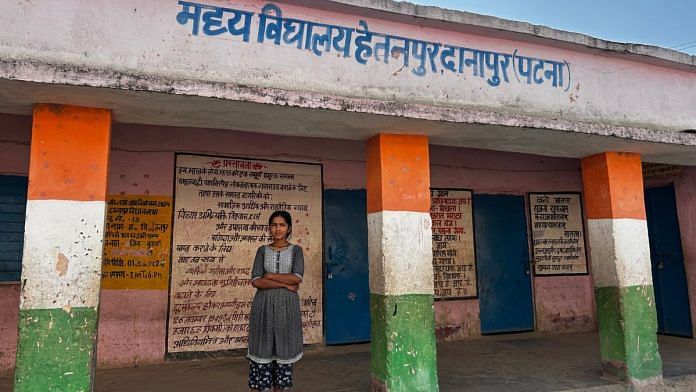Patna: A 17-year-old girl from Patna’s suburb got a call from the country’s education minister, Dharmedra Pradhan, and a promise for a bright future. Overnight, her education became the priority of PM Modi and Bihar CM Nitish Kumar.
In an interview with a TV reporter on International Women’s Day, Khushboo Kumari, an inter-college student, spoke of personal ambition on camera—of studying science and not arts in high school. But it resonated with the public.
“I wanted to study science, but my parents said I could only get a chance if I scored above 400 (out of 500) in my tenth board exams. I got 399 and lost the opportunity to pursue science by just one mark,” she said on camera, before breaking down in tears. The reporter couldn’t help but console her.
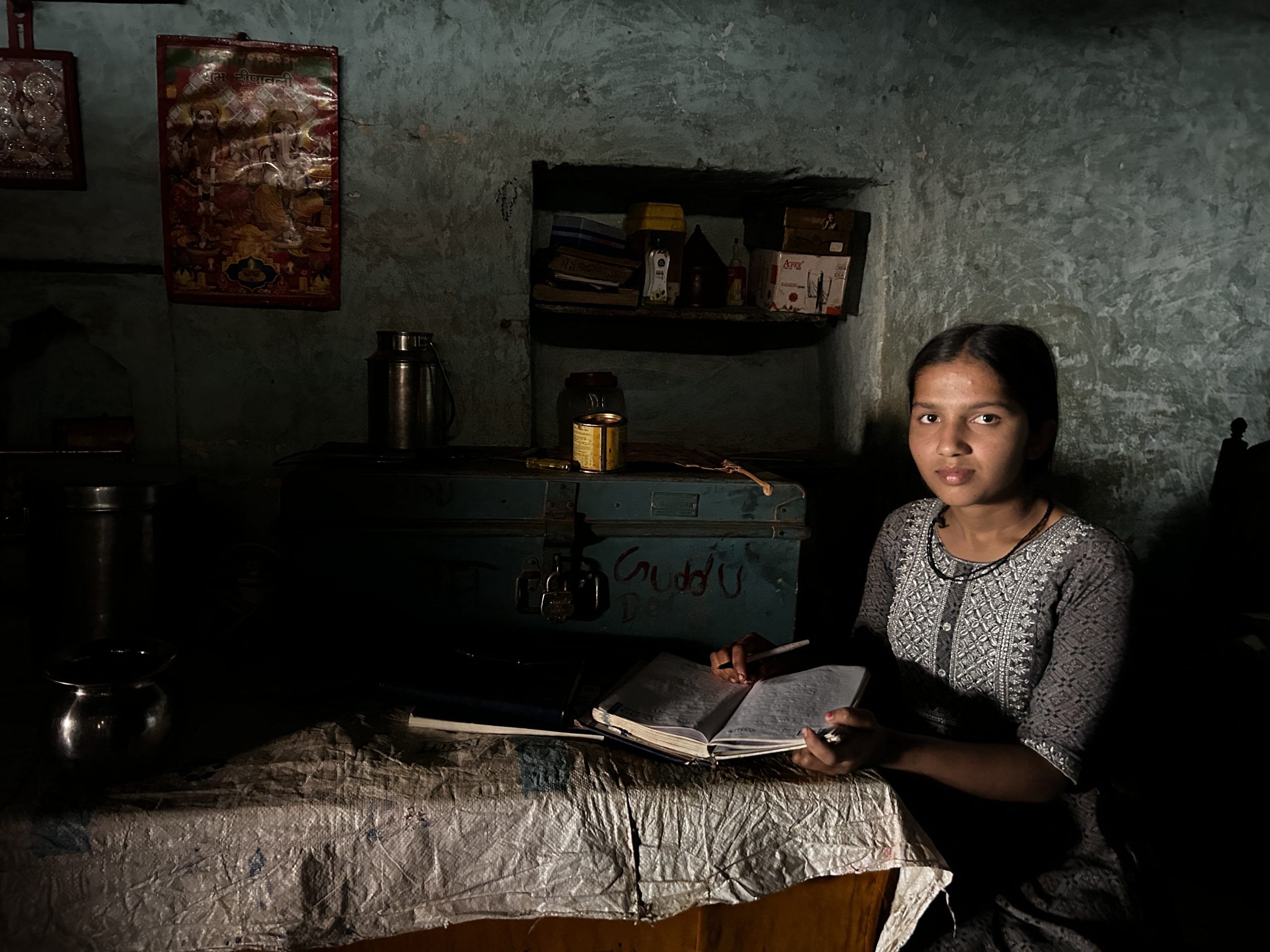
Haji Sheikh Abdul Gaffar Memorial (HAGS) Mahila Inter College stands on the margins of Patna, beside a drain merging into the Ganga.
Beyond the drain lies the vast expanse of Diara—home to 75 villages and nearly five lakh people—a rural hinterland, isolated from the rest of the world, grappling with the wrath of floods, extreme poverty, and persistent backwardness.
HAGS is a lifeline for the girls of Diara. It not only offers them high school education, but also a daily ticket to step outside their world, and catch a glimpse of the city’s possibilities.
Since childhood, I have dreamt of becoming a doctor. Nothing else has mattered to me. Each day at the arts college, I felt unhappy.
Khushboo Kumari, student
Each year after the new session commences, the college would come alive with the chatter of the hundreds of pink-suit-white-dupatta-clad girls. Among them were married girls with sindoor in their partings, their new roles etched on their foreheads. Some would return the following year with their rounded bellies. Others would move on to Danapur Degree Mahila College for a bachelor’s degree. But only to inevitably vanish into domestic life.
The yearly cycle leaves little room to achieve extraordinary things, and breaking free from it is rare.
Now, a wave of ambition has swept across the girls of Danapur after Khushboo expressed her ambition, refusing to be yet another girl with educational certificates in the marriage market.
“Since childhood, I have dreamt of becoming a doctor. Nothing else has mattered to me. Each day at the arts college, I felt unhappy,” Khushboo told ThePrint at her village, Hetanpur, located in the Diara of Danapur, two weeks after her video went viral.
Patna District Magistrate Chandrashekhar Singh confirmed Kumari’s enrollment in the 2025-27 session in television interviews. He spoke about how Kumari was fearful of the real challenges that would begin after completing her Class XII.
“We have ensured she receives the benefits of the cycle scheme, poshak scheme, and the student credit card after Class XII, which offers loans of up to Rs 4 lakh for those securing admissions but struggling with fees,” he told the press.
In Bihar, the Nitish Kumar government has undertaken several initiatives to improve girls’ education over the years. Among these, the Mukhyamantri Balika Cycle Yojana stands out. Launched in 2006, this scheme revolutionised girls’ access to education by providing financial aid for class IX schoolgirls to purchase bicycles. This has helped them in their mobility. The initiative is claimed to have led to a remarkable 30 per cent increase in school enrollment within its first year.
This is the paradox that while girls top science, arts, and commerce, one Khushboo’s doors are closed if she misses one mark.
Avinash Kumar, teacher, Hetanpur middle school
DM Chandrashekhar has also assured that the administration would closely monitor her progress and ensure that her family is linked to all available government schemes, to improve their overall family income.
“I lost a year to Arts, but I am happy today, ” Kumari said, adding that she now awaits her admission, aiming to become the first girl in her family to study science.
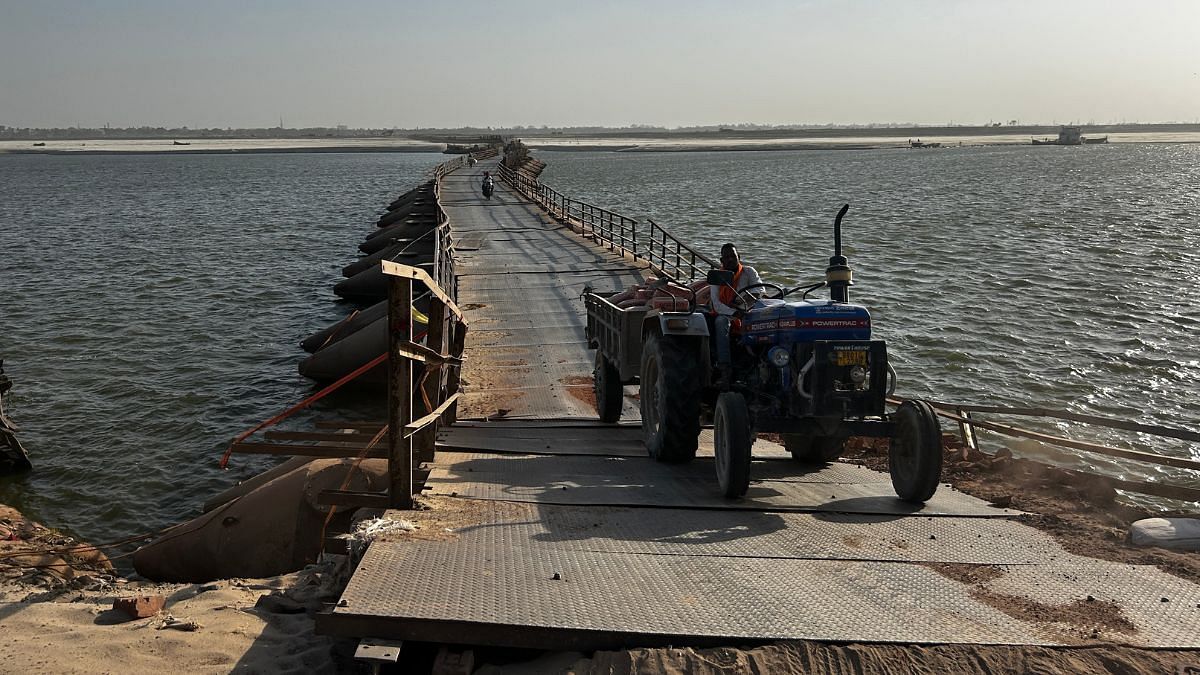
‘Arts for girls, science for boys’
Upendra Ray, 45, and his wife, Chunarsi Devi, 43, live in a tiny one-room home with their five children—three daughters and two sons. Khushboo is the youngest child. Both her sisters studied Arts, and both her brothers studied science.
“It is common here—arts for girls and science for boys,” Khushboo remarked, adding that scarcity doesn’t mean boys won’t be prioritised.
Ray, a milkman by profession and belonging to the Yadav caste group, a backward caste in the state, earns a daily wage of Rs 400-500 by selling milk in Danapur city.
While Chunarsi Devi has never gone to school, Ray has managed to study up to Class X.
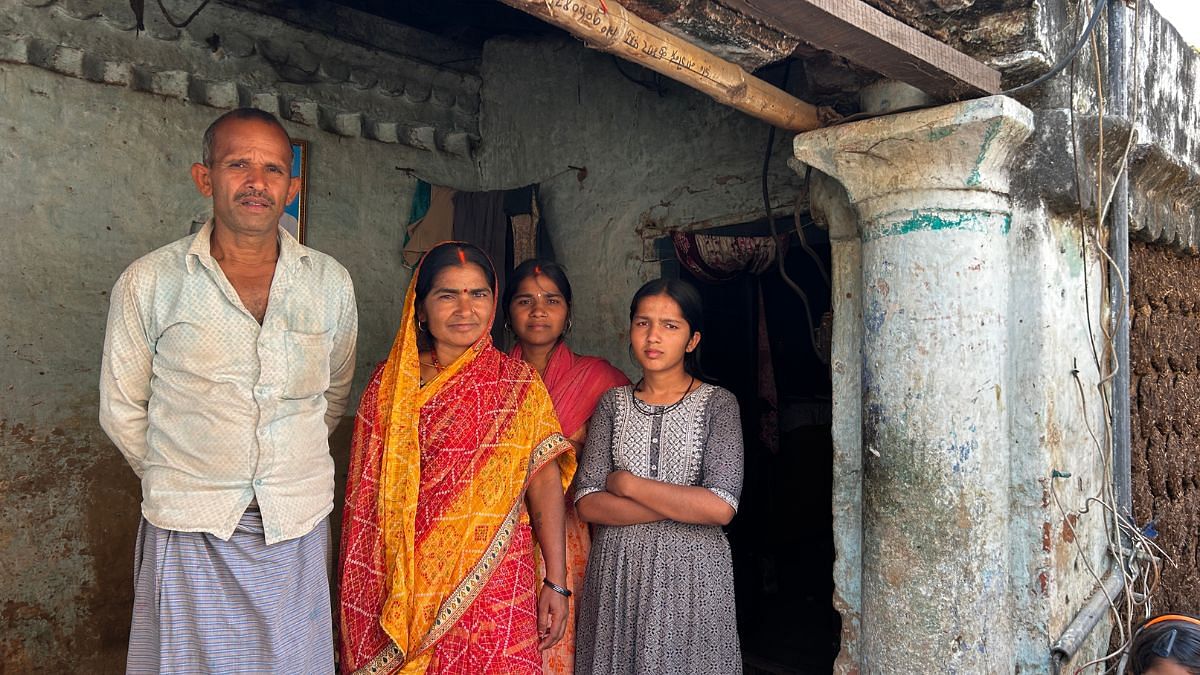

There aren’t any role models around Kumari. But she found inspiration in an unexpected place—a film called “I Am Kalam”.
A few days before she appeared on national TV, she had watched the movie on a neighbour’s mobile phone. The 2011 film revolves around a young boy called Chhotu, who adopts the “Kalam” name. He works at a roadside dhaba and often dreams of becoming like former President APJ Abdul Kalam.
“If Chhotu could dream that big, I can too,” Khushboo had reminded herself.
Hetanpur is a village of more than 8,000 residents. Khushboo has witnessed the struggles of her village, where people often die before reaching a city hospital across the Ganga.
“Things would get worse when the area flooded,” she said. “That’s when the thought of becoming a doctor struck me. When I started going to the city, I saw women working too.”
She gestured toward a three-story house at a distance from her home, the largest in the village, owned by Subhash Yadav, a sand mafia turned politician.
“That house mocks the huts around it,” she said with conviction. “When you get rich, you should help build roads, bring a hospital, or open libraries. But Yadav hasn’t done a thing for the village.”
Kumari is determined that once she becomes a doctor, the village will be known for more than just a sand mafia’s village.
But she said that even boys who study science often don’t achieve much in their lives. Most of the village men have ended up becoming migrants.
Hetanpur had only a middle school until two years ago. Now, they have a high school as well. However, both girls and boys must cross the Ganga every day to attend various city schools to complete their Class XII. During the four months of monsoon, boats are the only means of crossing, while for the rest of the year, a makeshift pipa (pontoon) bridge serves as the crossing.
“There’s no concrete bridge connecting us,” Kumari said, adding that local elections focus on bribing voters rather than addressing critical issues like libraries, roads, or hospitals.
But she wants to change that.
“In my lifetime, I have only seen the rich fighting in elections, now that I have found a voice, I can think of it,” she said.
Also read: Husband-killing is a new small-town India buzz. Meerut drum, Jaipur fire, Auraiya supari
Roll number 207
Roll number 207 at HAGS was nothing more than a number on a list—until the viral video changed everything.
Khushboo, the introverted student who often sat quietly on the last benches, suddenly became the face of a story—one that exposed the reality of nearly 75 per cent of the college girls, who hail from Diara.
But it also brought attention to the struggles and determination of Haji Abul Gani Shaheed Women’s College, vitt rahit college in the state. These are non-constituent institutions that receive occasional grants from the state government. There are more than 500 such colleges in the state, which run on donations from the government and are affiliated with state universities.
“There are not enough funds to run this. There’s no toilet, no water facilities. We rely on only eight regular faculty members and the support of eight guest lecturers,” Principal Suraiya Jabeen, 69, who joined the college as a lecturer in 1990, spoke about the struggles they face.
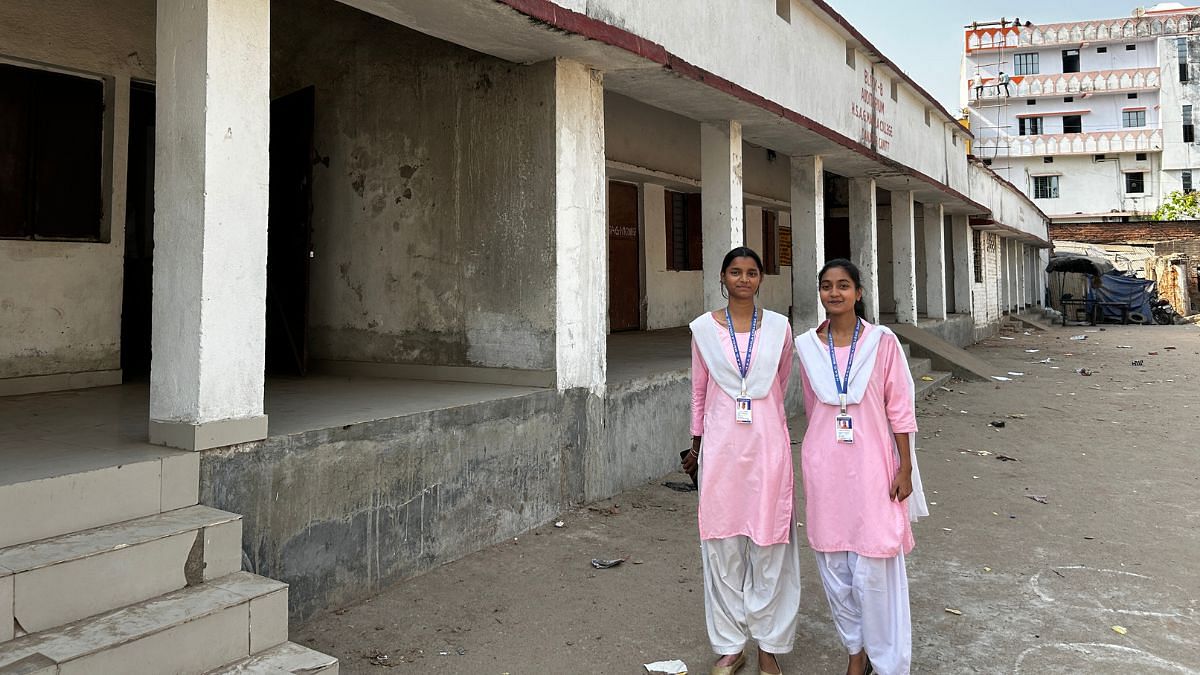
Established in 1983, the college is the hope for young women in the region. They are daughters of pickup drivers, LIC agents, transporters, security guards, and milkmen.
Sneha Kumari, Riya Kumari, and Priyanka Yadav—all science students—admitted that opportunities for girls in the science stream aren’t as bright.
“Many of our families prioritise tuition fees for the sons while trying to spend the bare minimum on the girls’ education,” they said. In many families, higher education for girls is not seen as an investment in their careers but a strategy to secure better marriage prospects.
But Shiv Pujan Singh, the college cashier who has witnessed decades of change since joining in 1987, reflected on a shift. “The number of girls enrolling has grown over the years.”
But that isn’t translating into a high pace of women joining the workforce. Women have even been topping exams—at school, college, and government exams.
Bihar Board announced Class XII results for 2025 and girls topped in Science, Commerce, and Arts streams. Priya Jaiswal topped the Science stream with 96.8 per cent, Raushani Kumari in the Commerce stream with 95 per cent, and Ankita Kumari and Shakib Shah shared the top rank in the Arts stream with 94.6 per cent.
“This is the paradox that while girls top science, arts, and commerce, one Khushboo’s doors are closed if she misses one mark,” said Avinash Kumar, a teacher who first landed in Hetanpur village in 2006. At the Hetanpur middle school, he has taught hundreds of girl students, including Khushboo Kumari during her time in Class VIII.
Khushboo’s 399 marks may not be celebrated as a stellar academic achievement by Kumar. “Here, even girls who score 400 or more marks often find it difficult to progress after Class XII,” said the 50-year-old.
Yet Khushboo stands out—not just for her marks, but for her determination to carve her path.
Also read: Brahmins, BJP, and Waqf—the story of Tamil Nadu village’s fight for land
‘It wasn’t just about marks’
In the village of Hetanpur, the question of why no one invests in the science education for girls now looms large.
Chunarsi Devi, Khushboo’s mother, reflected on why she denied her daughter a chance to study science.
“No parent wants to hold their children back,” she said, recalling how the family’s day-to-day struggles made it impossible to support one of their daughters’ dreams.
“It wasn’t just about her marks,” she added.
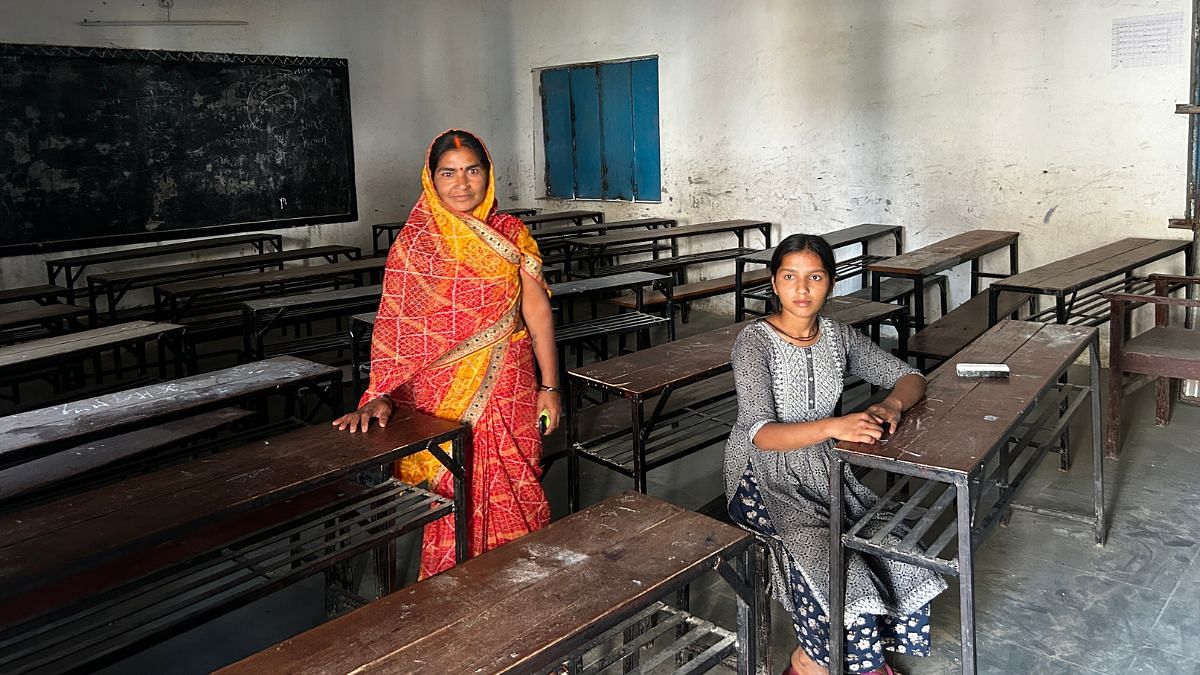
If Kumari had continued for the Arts stream in her Class XII, the family would have spent a total sum of Rs 7,200 on her overall high school education.
This way they would have avoided the coaching fee, an additional expense that often burdens parents whose children study science and manage with second-hand books. And Khushboo would have helped her family with household chores, it was assumed. But science, Khushboo said, came with a much higher price tag.
“Taking science means triple or four times the money. It needs more time, more support—girls are not given that,” she said, pointing out that the added burden of private coaching and practical materials makes it further unaffordable.
Hetanpur is a village where girls’ education after Class VII has been treated as a mere token formality.
“They didn’t go to school regularly every day, only appeared for the exams,” said Khushboo, describing what she had seen over the years. The rest of the girls’ time was consumed by endless work, both at home and in the fields.
Now, a new hope has entered this Diara.
Muskan, Khushboo’s neighborhood friend, accompanies her to all interviews, trying to catch the camera’s attention.
She proudly declares that she, too, has started to dream—of becoming an IAS officer.
“When I was in Class IX, I used to wonder if I should have a dream too,” said Muskan, now in Class X, her face glowing with confidence.
(Edited by Anurag Chaubey)


